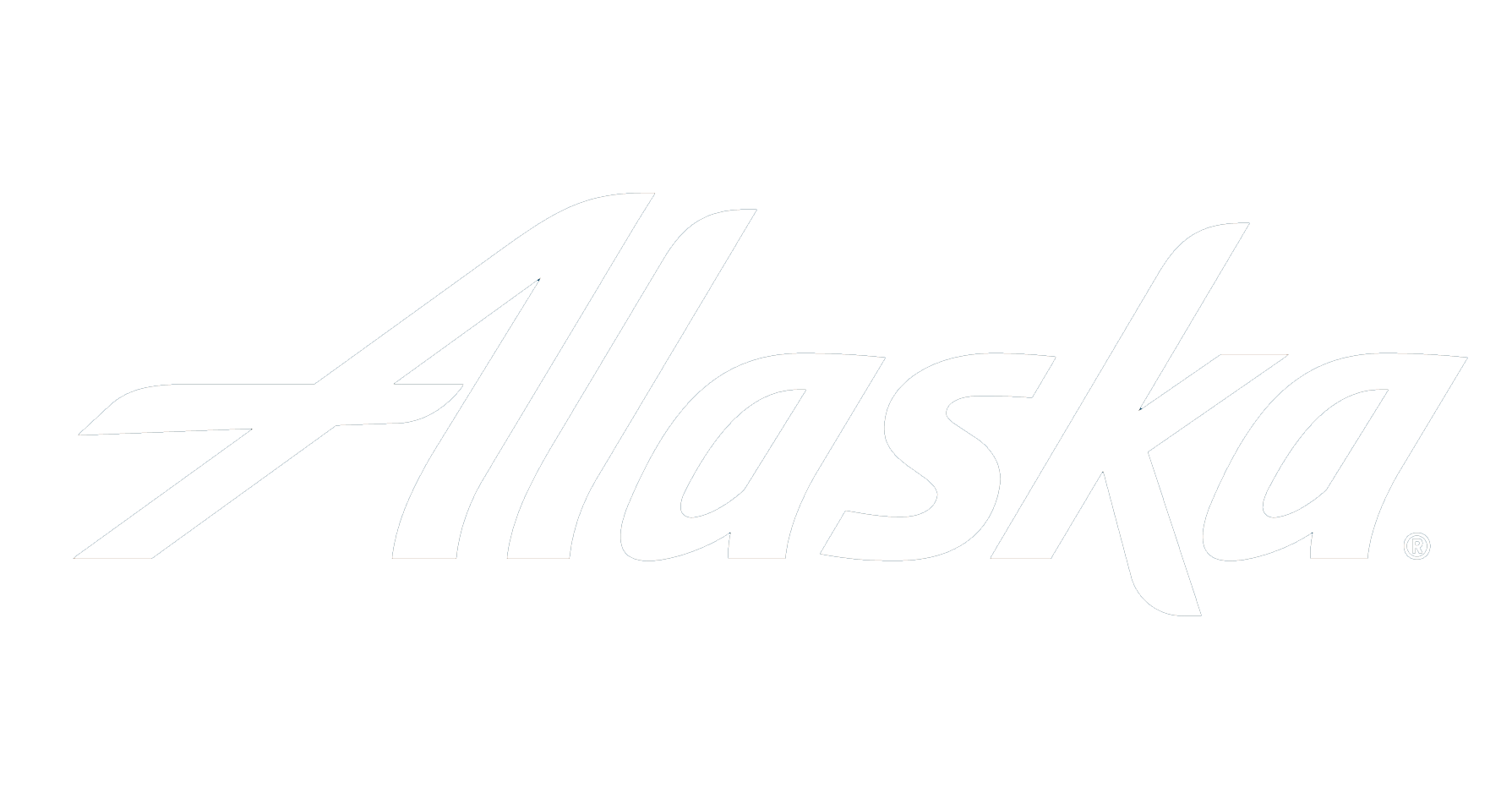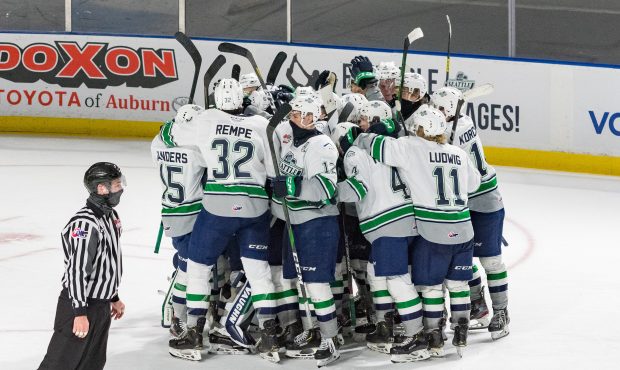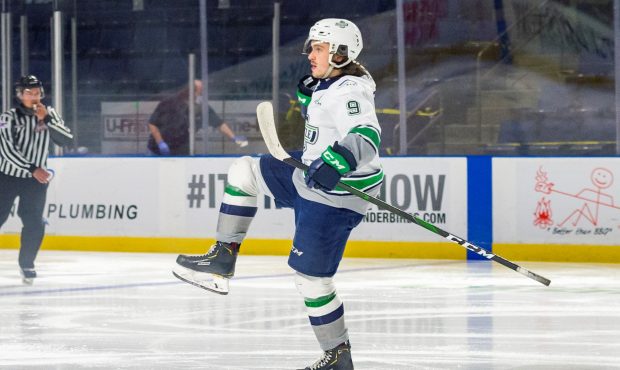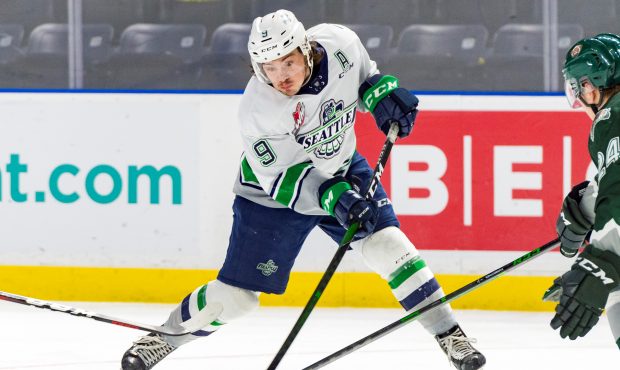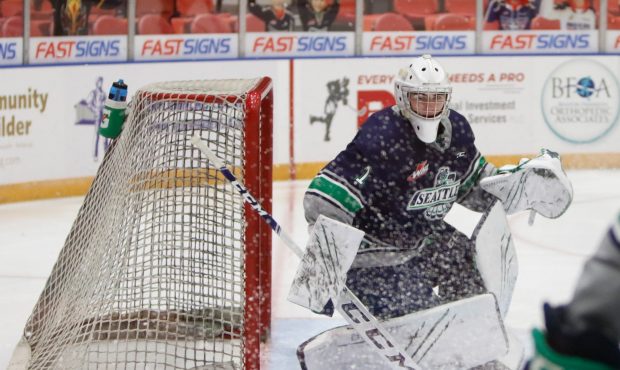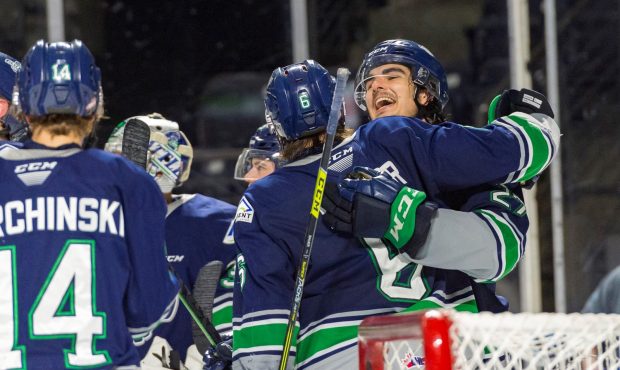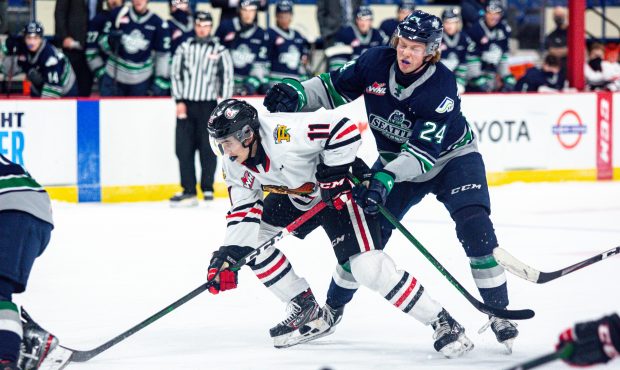CHL vs. NCAA: the battle rages on
Sep 7, 2012, 11:39 AM | Updated: 1:38 pm
|
|
By Tim Pigulski
Tate Martell has become somewhat of a celebrity in Seattle. The 14-year-old phenom committed to the University of Washington before he even began his eighth grade school year. Despite the verbal commitment from the young star, Martell won’t be allowed to make a final decision on where to attend college until Feb. 1, 2017 — approximately four and a half years from now.
It won’t even be until Sept. 1 of Martell’s senior year in high school that the UW will be able to make an official commitment to him. Universities aren’t permitted by the NCAA to offer a written scholarship to a player until the beginning of their senior year of high school.
Pundits and analysts have asserted that Martell’s commitment, and his pursuit by the UW, came when he was far too young. After all, who knows who will be coaching the Huskies in four and a half years? Will Martell continue to develop on his current track? How much stock can be put into a 14-year-old’s commitment?
Welcome to the world of Major Junior hockey.
For those pursuing a professional hockey career, decisions such as Martell’s are the norm. Players are often noticed in their bantam years when they’re about 14 years old. At that time, the player is preparing for the Canadian Hockey League draft, where they hope to be selected shortly after they turn 15.
Having the draft occur while players are so young offers risks and potential rewards to both the player and the organization that selects him.
For the player, they have the obvious benefit of playing in the top developmental league in the world and therefore giving themselves the best chance of being noticed by a National Hockey League team. Getting drafted to play for a team in the CHL acts as the first major stepping stone in a young hockey player’s career.
However, the decision to commit to playing in the CHL, which is comprised of the Western Hockey League, Ontario Hockey League, and Quebec Major Junior Hockey League, also means that the player forfeits his NCAA athletic eligibility. College sports’ governing body considers the CHL a professional league, meaning that as soon as a player suits up for a CHL team, they begin to eat into their NCAA eligibility.
It’s a huge amount of pressure to place on an athlete who just began high school.
For the organization that drafts the player, the team seeks to select an athlete that will sign with the team and perform at a high level.
They also run the risk that a player will make the decision that they would prefer to attend and play hockey at a university, meaning that the team essentially wasted a draft pick. When high draft picks don’t sign, it likely means a less talented roster, leading to fewer wins, a less devoted fan base, and ultimately, less money for the organization.
Look no further than right here in Seattle, where in 2011, the team selected Kamloops, British Columbia-native Ryan Gropp with the sixth overall pick in the draft. Gropp, a talented left wing, is now 16 years old and has yet to sign with the Thunderbirds. With each passing day, his commitment becomes less and less likely.
Gropp, while continuing to leave his options open, has expressed interest in pursuing the NCAA hockey route and his current actions attest to the speculation that he’ll pass on the WHL.
Carlos Sosa, a practicing attorney in the state of Washington and co-founder of Turning Point Sports Management with former NHL player Darcy Tucker, has worked with players at every level of major hockey, ranging from the NHL to the CHL to the NCAA.
“Ryan Gropp is an exceptional hockey player,” said Sosa, the former Thunderbirds radio color commentator. “Everybody in the business knew that [Gropp’s] family was very educated and really believed in university education. On top of that, the father played university hockey. Given those facts, it was probably reasonable to expect that Ryan would choose the NCAA route.”
The Thunderbirds ended up liking Gropp so much that they decided that drafting him with their first-round pick was worth the risk — a risk that’s taken with every single choice in the Bantam Draft.
One can view a similar situation with current Chicago Blackhawks superstar and former University of North Dakota center Jonathan Toews, who was drafted by the Tri-City Americans first overall in 2003.
“They thought he was coming a few years ago and he didn’t. They made a calculated choice and it didn’t work out,” Sosa said. “Sometimes you roll those dice. Sometimes it works, sometimes it doesn’t.”
Just up the road from Seattle, the Everett Silvertips found themselves on the losing end of a comparable situation. One of their 2009 first-round Bantam Draft picks, Seth Jones, is now projected as a top-5 pick in next year’s NHL Draft. Unfortunately for Everett, Jones hasn’t suited up for them and won’t, barring a huge and unprecedented move.
Jones spent two years with the U.S. National Team Development Program and let the University of North Dakota know that if he chose to play in the NCAA, it would be for them. The talented defenseman never technically committed to UND, but Jones’ representative let the Silvertips know that his client had no interest in playing for Everett. As a result, they traded his negotiating rights to rival Portland and he signed with the U.S. Division powerhouse a few short weeks later.
Everett acquired two players, the rights to two others, and a draft pick, but it’s tough to say they came out on the better end of the deal, losing a highly touted NHL prospect to an opponent they’ll face at least 10 times this season.
As the Americans did with Toews and Everett did with Jones, the Thunderbirds took a calculated risk on Gropp. Had he signed in Seattle, they would have gained a talent that registered 128 points in only 58 games while playing in a top-notch Bantam league. Shortly before his draft, Gropp expressed interest in playing in the WHL to Seattle general manager Russ Farwell. His talent, combined with a sort of “soft verbal” commitment, led Seattle to believe that the potential reward outweighed the risk that Gropp would follow in his father’s footsteps.
In the middle of the 2011-2012 season, the Thunderbirds found themselves on the opposite side of the equation. Right wing Connor Honey, at the time a 17-year-old hailing from Edmonton, Alberta, had attended Thunderbirds training camp prior to the season. After the camp ended, Honey chose to keep his NCAA options open, deciding that he would play a couple of seasons in the United States Hockey League (what Sosa describes as a “developmental league” for the NCAA) before he would be eligible to suit up for the University of Denver, where he’d offered a verbal commitment.
Midway through the season, Honey contacted Farwell, stating that he’d like to rejoin the Thunderbirds, thereby sacrificing his NCAA eligibility.
“A [verbal commitment] is no commitment. It’s nothing,” said Sosa, referring to the oral pledge that young players often make. “In this world, a verbal commitment is nothing because it can be discarded by both sides. Now, if it was the written one after he’s turned 18, and he signed his Letter of Intent, there might be an argument there.”
The argument Sosa refers to is whether or not Honey, who had been playing for the USHL’s Green Bay Gamblers, was obligated to follow through on his spoken commitment to Denver, which he had made when he was 16. As is the case with top notch football and basketball players who offer a verbal pledge to one school and sign with another, seeing a teenager change his mind really shouldn’t come as a surprise.
Fitting somewhere in between Gropp and Honey is Bonney Lake, Wash. native Dylan Gambrell. Having gone undrafted in the WHL’s Bantam Draft, Gambrell turned some heads at Thunderbirds camp last month as a 16-year-old.
Another “soft” verbal commitment to the University of Denver, many have been curious about the likelihood that Gambrell instead chooses to play for the Thunderbirds. Turning Point Sports Management acts as Gambrell’s advisory committee, offering advice to both the player and his family to help them make the best decision’s for the player’s future.
“Dylan is a special case. I’ve known him since he was 7 years old. I’ve coached him and I’ve coached with his father. He’s an exceptional player that has really developed in the last two years into an extraordinary player,” Sosa said.
Having gone undrafted, Seattle chose to add Gambrell to their protected list, indicating an interest by the team in closely watching his development.
“He has options and he’s going to keep those options open. Him and his family are going to make a decision at the time and place of their choosing as to which options they’re going to accept,” Sosa said. “They’ve made a verbal commitment to Denver and their intent at this point is to honor that commitment. But again, anything can happen. All options are open.”
The circumstances surrounding Gropp, Honey, and Gambrell are all unique in their own ways and point to the constant competition between CHL teams and American universities to attract top-level hockey talent.
Should a player choose to play in the CHL, they gain the highest level of exposure and, unbeknownst to many fans, also receive one year of scholarship money for each season played in the league, up to a maximum of five years (for full information on the WHL scholarship program, visit http://www.whl.ca/prospects-central-whl-scholarship-program).
Of course, they won’t be able to play hockey while attending college in the United States but they still are able to pursue an education. If a player decides to use his scholarship to attend school in Canada, Canadian Interuniversity Sport (Canada’s equivalent of the NCAA) still allows the player to play competitive hockey for the university.
Those athletes who choose to bypass the CHL and play in the NCAA, like athletes in other major sports, likely will receive at least a partial scholarship and will be able to enjoy a somewhat “normal” college experience.
If an elite-level talent wants the fastest track to the pros, the Canadian Hockey League is generally the preferred option for players.
“It’s the most pro-like scenario and they have the best record of producing professional players in the world,” Sosa said about the professional development league.
For those players whose development situations may take longer, Sosa believes the NCAA may be a better choice, but still says it’s ultimately a personal preference and the choice of the player.
“Usually players in that type of development model are not the high end, dynamic players that college hockey makes their commitments to early,” he said. “College hockey makes a lot of later commitments at ages 18, 19, and 20. The early commitments you see at 15, 16, or 17 are for the top guys that could play anywhere they want, whether it’s Major Junior or college. They’re not for role players or supporting players, the type of players that every team at every level still needs.
“If your choice is purely ‘I want to get an education,’ then go to college. Just realize that if you’re not one of the top end guys, you’re not going to get there very quickly. It may even get to the point where you can’t start college until you’re 19, where most non-hockey college students are starting at 18.”
Each option remains a great path that may eventually lead to hockey stardom. However, with such even competition, both sides are constantly trying to gain the upper hand and things can get ugly.
Jacob Trouba, drafted by the Kitchener Rangers in the third round of the OHL’s 2010 Bantam Draft, is currently playing for the United States National Team Development Program — the top team for American players under the age of 18 outside of the CHL.
Despite being 18 years old and his commitment to the University of Michigan, Trouba continued to be heavily pursued by Kitchener. In July, reports began surfacing that he may have been wavering on his college commitment. The university’s newspaper released an article stating that the stud defenseman was offered $200,000 by Kitchener to bail on the Wolverines — an obvious violation of OHL rules.
Kitchener is firmly denying the allegations and has filed a libel lawsuit seeking $1 million in damages from the student newspaper.
While the situation is still a hot topic and has yet to be decided, it’s a perfect example of the battle between the two organizations. Trouba is an elite athlete, highly desired by a number of teams, including the NHL’s Winnipeg Jets, who selected him with the ninth overall pick in June’s Entry Draft. To date, he maintains a firm commitment to play for Michigan.
Being a northern border state and very close to Canada, Michigan often finds itself in similar situations. Prior to the 2010-11 OHL season, star goaltender Jack Campbell, a first-round NHL draft pick by the Dallas Stars, decided that he would not attend the University of Michigan, as he had previously stated, and would instead sign with the OHL’s Windsor Spitfires.
Often finding themselves at a disadvantage due to NCAA recruiting regulations, commissioners of the men’s Division I college hockey conferences established an organization independent of the NCAA, College Hockey, Inc. (CHI), intended to promote education and the college hockey experience. Because CHI is not technically affiliated with the NCAA, it is able to contact recruits much sooner than schools would normally be allowed, somewhat leveling the playing field between them and the CHL.
CHI hired former NHL Players Association Executive Director Paul Kelly to accomplish the difficult task of establishing NCAA hockey as a viable alternative to the CHL. Kelly claimed that under-the-table payment, particularly for the services of American players, is a common practice and anyone who doesn’t see it “has their head in the sand.”
A bold claim by Kelly, who has since resigned from his position with CHI due to a power struggle with the NCAA’s commissioners, that has not been proven.
The debate boils down to whether or not the NCAA will be willing to change its rules. Prior to the early 1980s, players were allowed to play Major Junior hockey in Canada and could eventually, when they were 17 or 18, move down to the United States to finish their amateur hockey career at a university.
As Sosa puts it, “before the NCAA created an absurd rule saying that you couldn’t play Major Junior and NCAA, the player had it all. It was great. You could play Major Junior for a couple of years, then move down to the States to play in college.”
Ultimately, the NCAA’s decision forced athletes to make the difficult decision of where to play at 14 or 15, rather than 18 or 19.
“I would love to see them go back to [the old system],” Sosa said. “But I doubt they will.”
The situation, as it stands, is extremely difficult and sensitive for everyone involved and not as black-and-white as many perceive. In the cases of Gropp, Honey, Gambrell, and first overall pick Mathew Barzal, each comes from a different background and has different influences.
Often a front office can have a good idea about where a player is headed, but until it’s in writing, and even sometimes after, nothing is set in stone.
You can follow Tim on Twitter @tpigulski.

